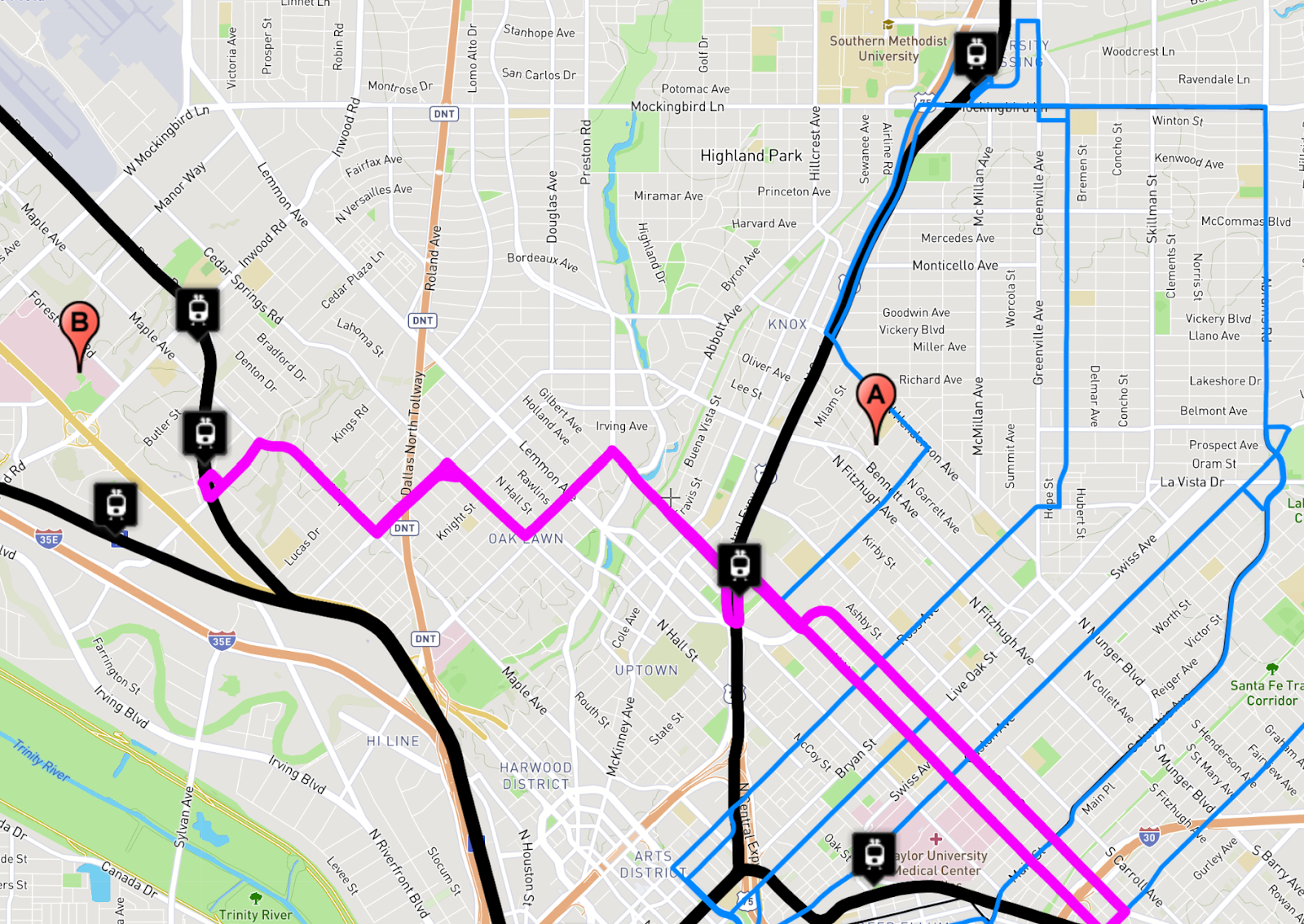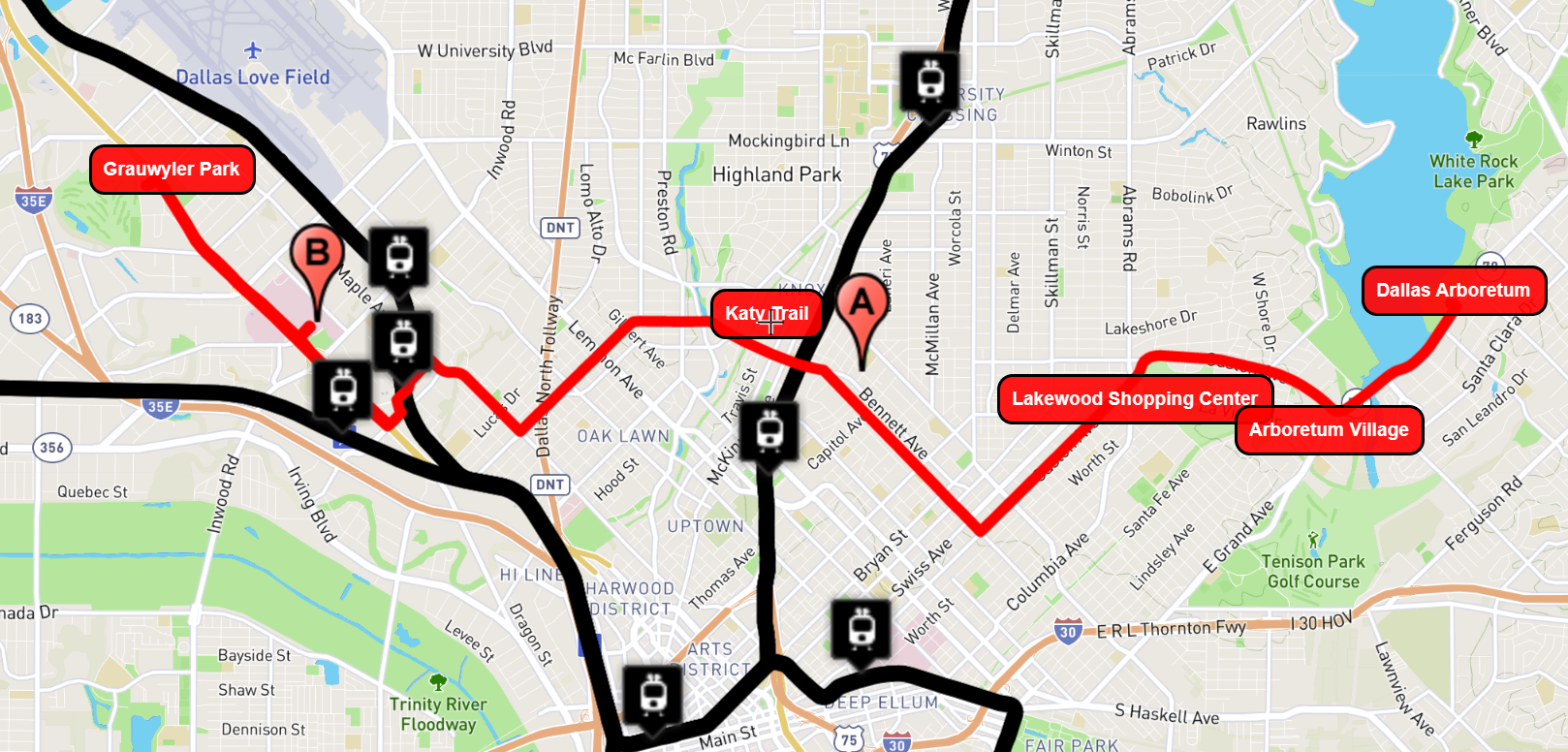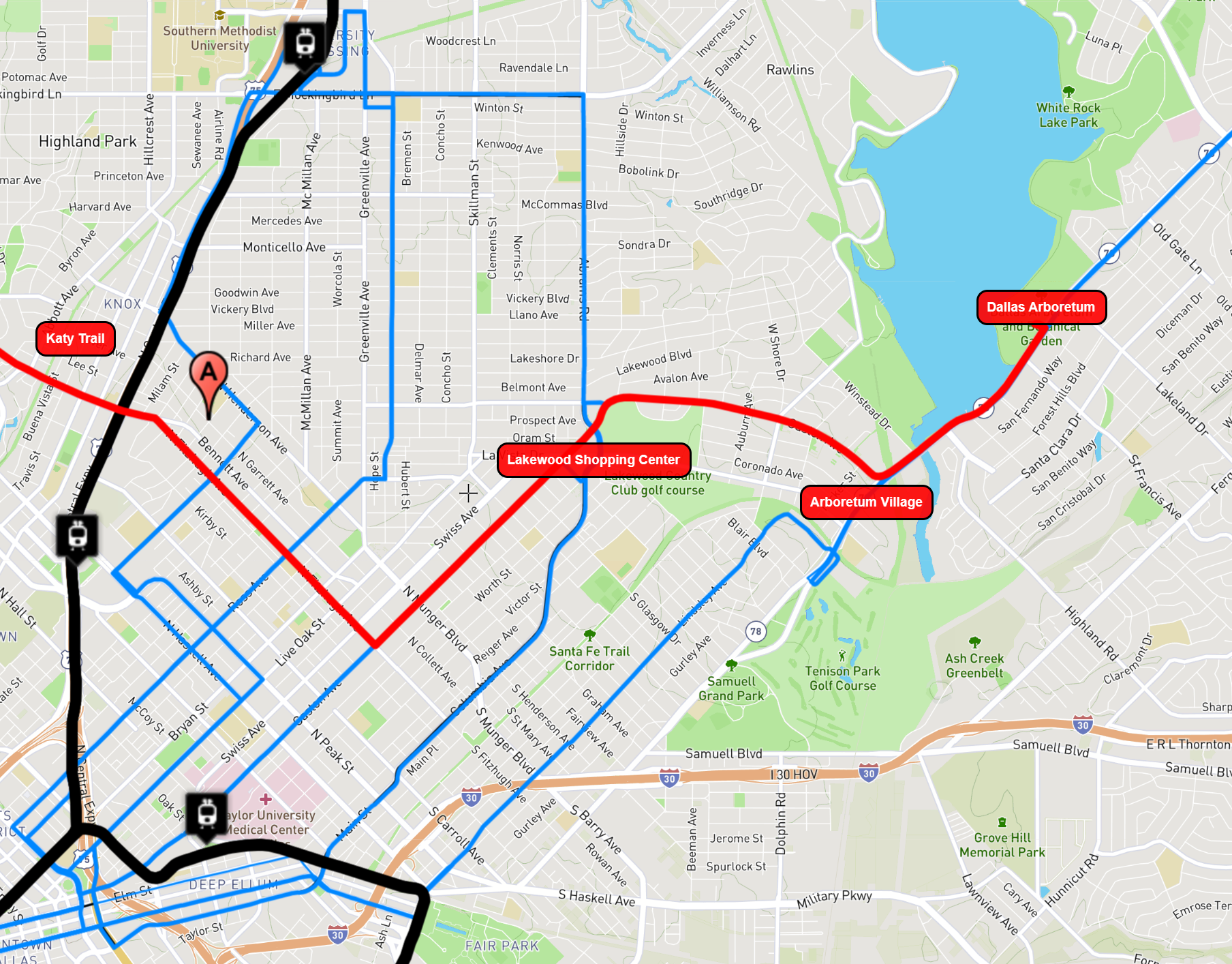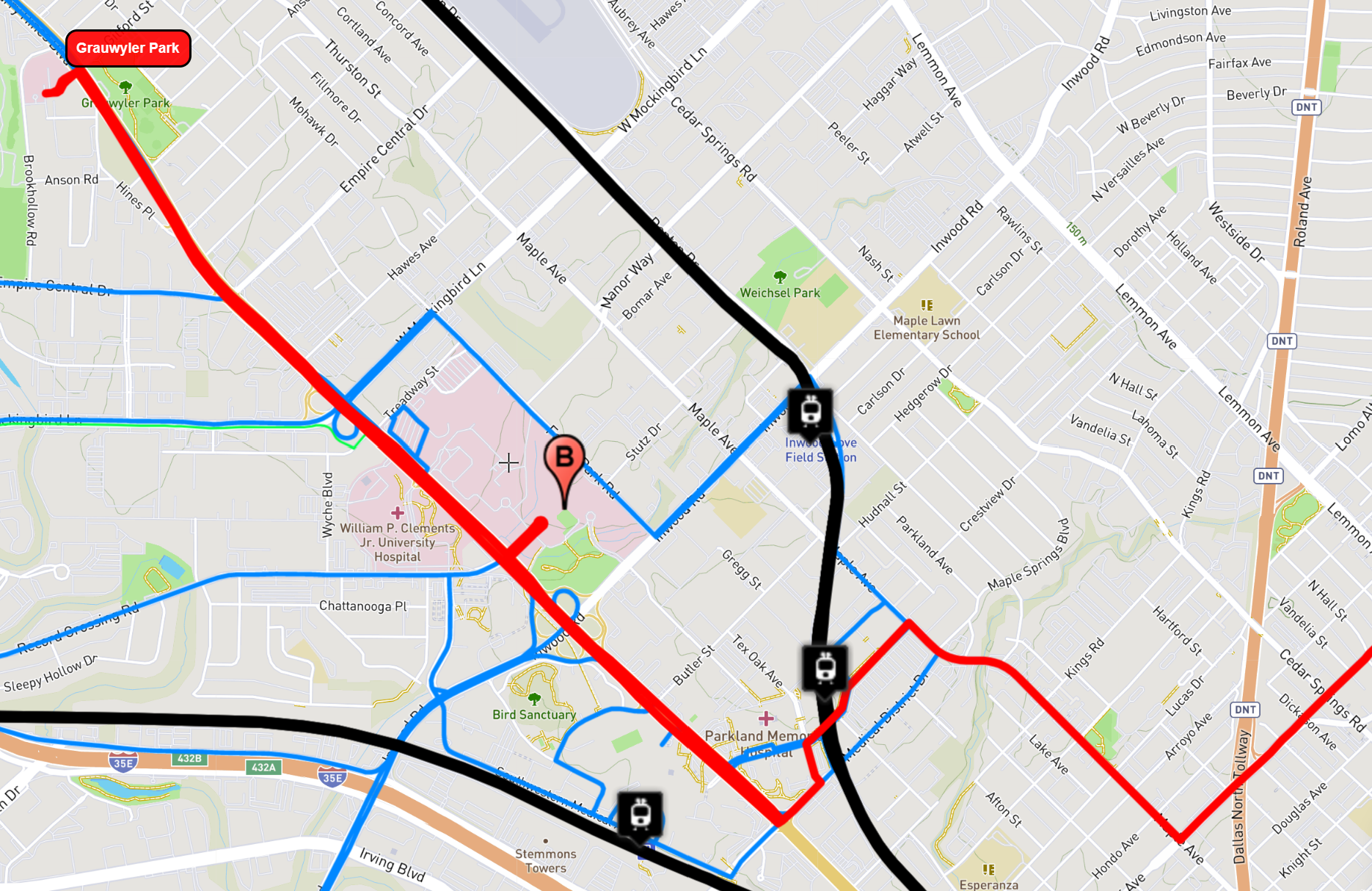DART Request: Connect East Dallas to Medical District by Bus
Health professionals living in East Dallas need a direct connection to the Medical District that doesn't involve an hour-long downtown detour.
By Hexel Colorado on April 15, 2023
The Challenge
Many health professionals live in East Dallas and work or study at Medical District institutions. One of my neighbors on my street is a doctor at UT Southwestern Medical Center.
According to Google Maps, the 5-mile journey takes 26 minutes by car during rush hour. However, according to DART’s Trip Planner, the journey would take at least 50 minutes and require either 2 or 3 connections. Adding a buffer for traffic delays, performing this commute by transit could be over an hour each way every day.
Fifty minutes is a ridiculous amount of time to travel just 5 miles. Bicycling would be the ultimate mode to travel such a distance; such a ride could be as fast as driving or faster due to rush hour traffic. Unfortunately, the only protected cycling facility between East Dallas and the Medical District is the Katy Trail, which runs north-south. Performing this journey by bicycle would mean cycling unprotected on-street for most of the trip.
The Issues
Multiple issues cause the ridiculous transit time, the first being a lack of east-west connections. While several bus routes are running north-south connecting East Dallas and Downtown (shown in blue on the map below), only one Route is running east-west, connecting East Dallas, Uptown, and the Medical District (shown in pink on the map below). Although East Dallas residents can easily take a bus downtown without transfers, going to work in the Medical District requires one transfer minimum.
The second issue is the distance between stations and final destinations (i.e., hospitals and university buildings). After health professionals transfer from their first bus in East Dallas to either a train (shown in black on the map below) or a second bus (shown in pink), they deboard at a rail station a mile or more away from their final destination. Transit commuters must either walk 20+ minutes or wait for and transfer to a third bus (shown in blue).
Suggested Solution
To take cars off the road, we need alternatives to driving that are just as or more convenient. We need a solution that accomplishes the following to provide such an option.
- Instead of requiring a minimum of one transfer, enable the possibility for zero transfers.
- Instead of requiring a maximum of two transfers, require only one transfer at most.
- Instead of transferring downtown, allow the ability to transfer close to home.
To meet these three criteria, I recommend that DART create a new bus line connecting East Dallas directly to major institutions in the Medical District.
- Start at the Dallas Arboretum.
- Move west in Old East Dallas on Gaston Ave and Fitzhugh Ave.
- Continue west in Uptown on Fitzhugh Ave and Wycliffe Ave.
- Stop and go at SWMD/Parkland Station before continuing west on Harry Hines Blvd.
- Stop and go at Parkland Memorial Hospital.
- Stop and go at Southwestern Medical Center.
- Stop and go at William P Clements Jr University Hospital.
- Stop and go at Grauwyler Park Recreation Center.
- Terminate at Promise Hospital of Dallas.
- Repeat in reverse.
For reference, let’s call my solution “Route S.”
Benefits for East Dallas
Route S provides several benefits. It provides a direct, zero-transfer connection between East Dallas and the Medical District. Thousands of workers living in apartments and townhouses along Gaston Ave and Fitzhugh Ave could effectively walk out their front door, take the bus, and be transported directly to their destination hospital or university with minimal effort.
Another benefit of Route S is that it can serve as an east-west spine connecting residents to the most popular destinations in East Dallas. For example, consider someone living along Greenville Ave who wants to visit the Dallas Arboretum. Currently, they must ride Route 3 for three miles to downtown, then transfer onto Route 214 to ride another 5 miles. This itinerary requires traveling a distance three times longer than driving directly by car.
With Route S, residents on Greenville Ave can transfer after riding Route 3 for barely a mile. The result is a much faster trip over a distance comparable to car travel. The same benefit applies to the thousands of people living along all the existing bus routes in East Dallas. Route S increases connectivity to Arboretum Village, Lakewood Shopping Center, and Cityplace.
Benefits for Uptown and Medical District
A key advantage of Route S is that it passes through SWMD/Parkland Station without terminating there, providing three additional benefits. First, it allows health professionals living in Oak Lawn, Uptown, and East Dallas to get to work while saving time on transfers at the station.
Considering the immense cost and land consumed by stations, we should always look to maximize their usefulness, especially when they currently serve only one purpose. Another benefit of Route S is that it increases the utility of SWMD/Parkland Station. For example, Route S gives travelers in Uptown a more direct connection to DFW airport, Love Field, Las Colinas, and more by way of Parkland Station.
Conclusion
Many transit trips are 2 to 3 times longer than car travel because DART trips often require multiple transfers and passing through downtown, even when downtown is far out of the way.
As DART plans the next upgrade to its bus network, I hope it seriously considers my recommendation and implements an east-west bus route to connect thousands of workers in East Dallas to the thousands of jobs in the Medical District.





